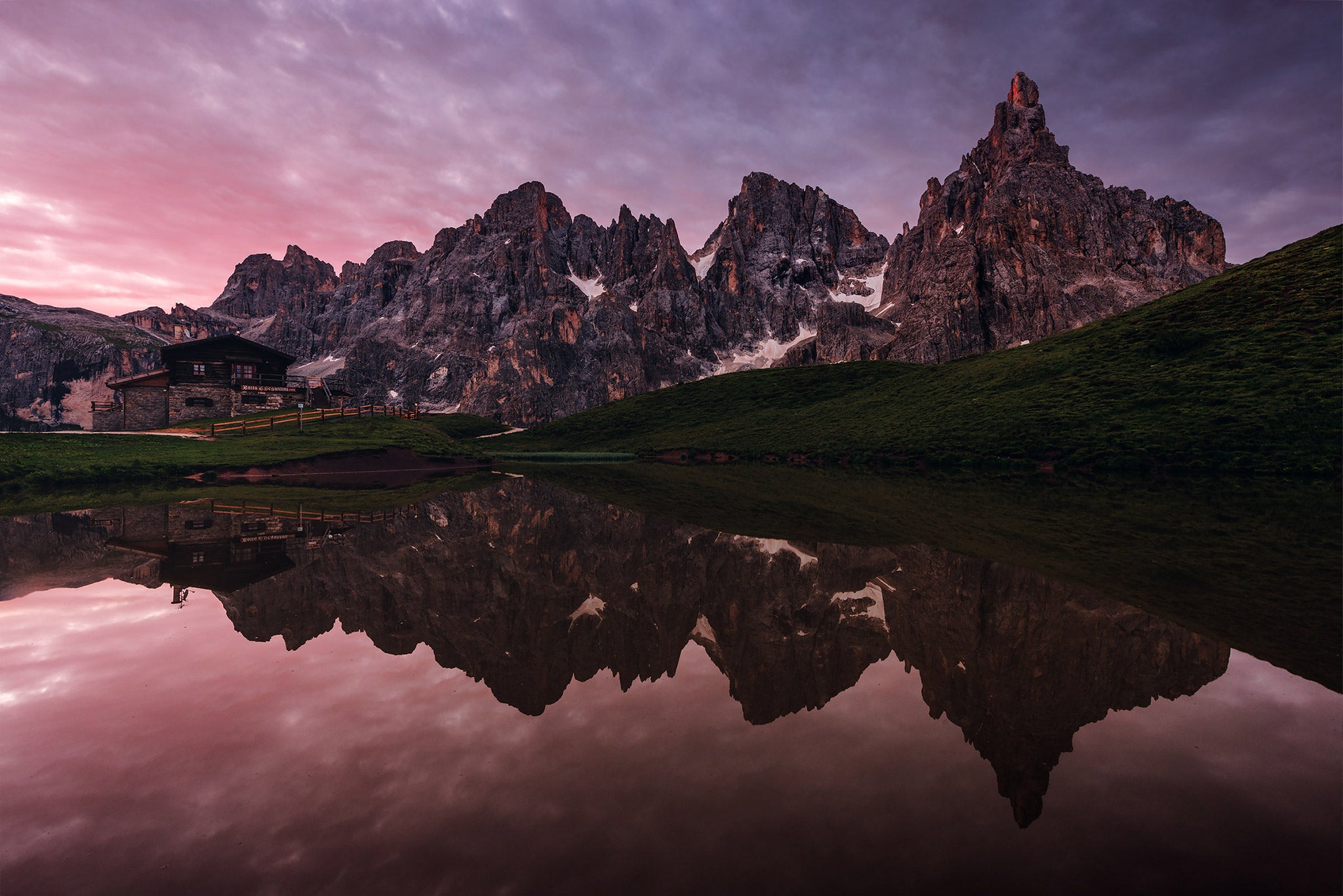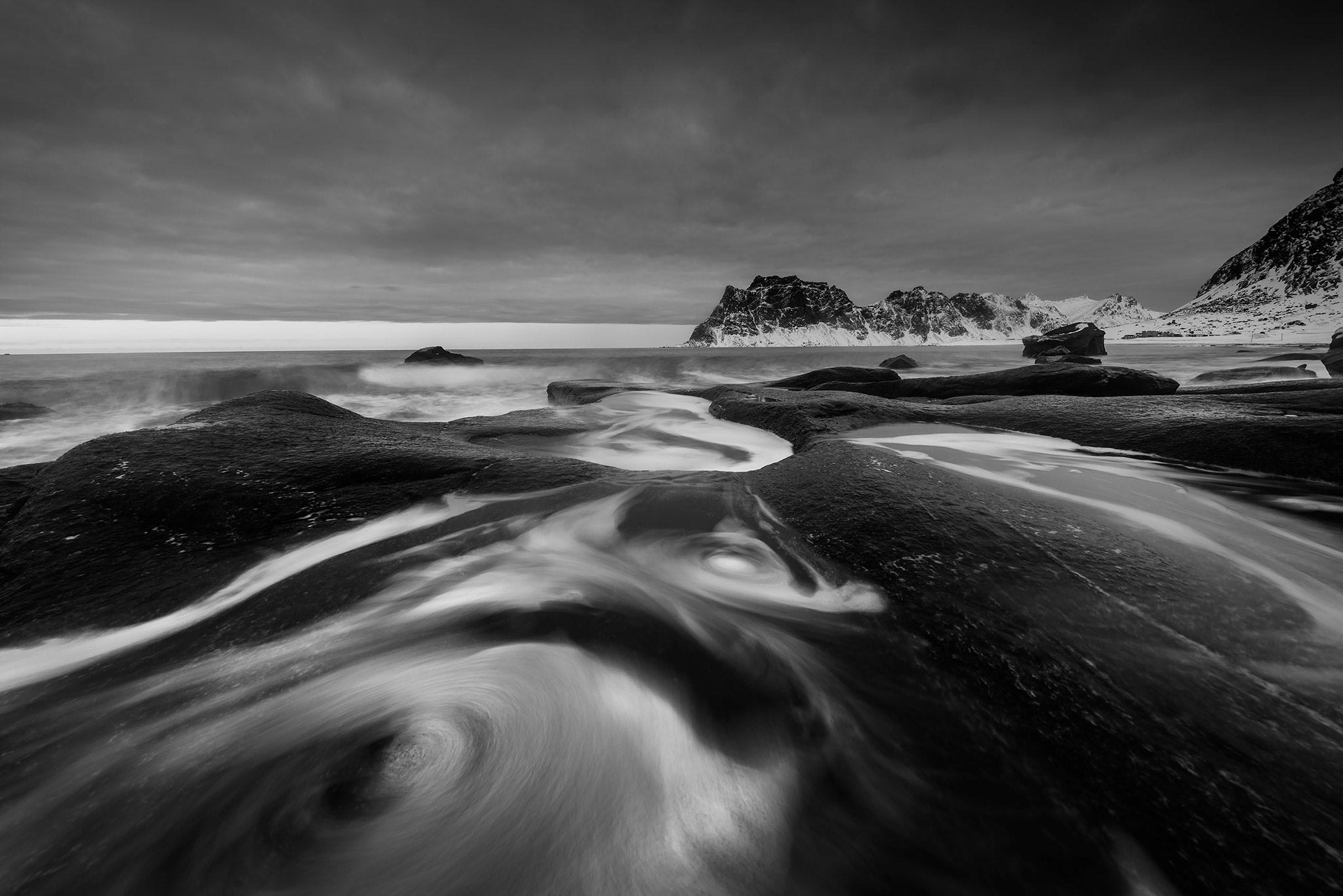
Leading lines are one of the simplest and most powerful tools for creating high impact landscape photos. They can mean the difference between what is a mundane snapshot versus a truly engaging photograph. When used well, they create a natural flow through your image, helping to give a wonderful sense of depth and dimension. They can also gently guide the eye deeper into the scene whilst improving the balance and overall composition.
- Learn about Horizontal Lines as a Compositional Tool in Photography
- Discover these 12 Tips for Capturing Amazing City Skylines
- Check out this article on Film is Not Dead: Where to Buy Film Online
Think about when somebody looks at a photo and points right at whatever the subject is – this is exactly the effect that you evoke by using this compositional technique. Leading lines allow you to grab your viewer’s attention and to draw them on a visual journey through the photo, by ultimately pointing them towards the points of interest that you want them to look at.
The beauty of Iceland is that leading lines can be found just about anywhere in the landscape, from jagged coastal cliffs to winding rivers, roads and even patterns in the sand. Basically, pretty much anything in Iceland with a well-defined edge can be used as a leading line. Keep in mind though that leading lines which are not so defined but are rather “implied” can also be surprisingly effective. This means that they might not be immediately obvious and could even be imagined to exist between two points of interest!
By keeping your eyes peeled at all times for leading lines, both implied and defined, you will soon be on your way to becoming adept at spotting them and using them in your compositions. If you’re still not sure about how to harness their power, then follow along with this article to discover ten highly effective ways to use leading lines in your photographs, which will allow you to put an interesting twist on capturing the truly amazing landscapes of Iceland in no time.
1. Making the Most of Paths, Boardwalks and Roads
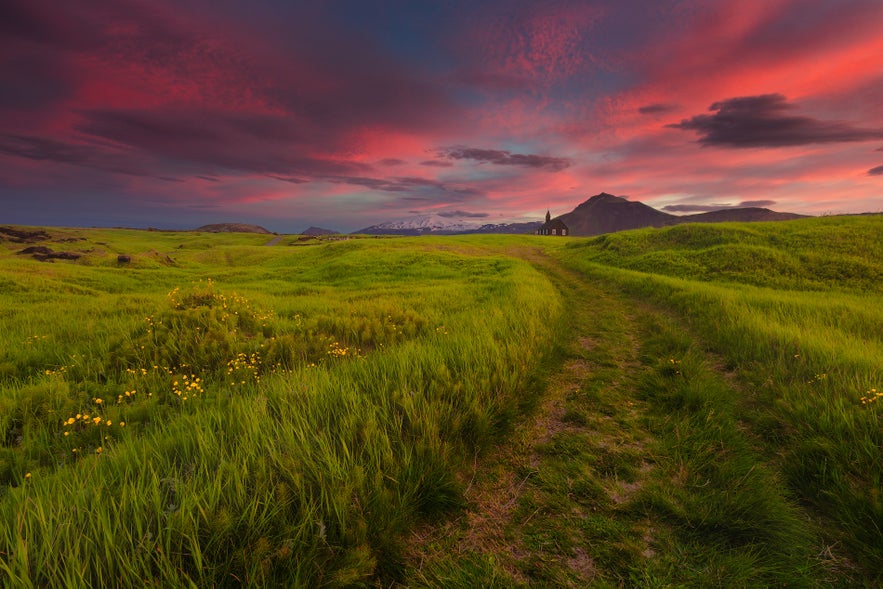 This grassy path makes the perfect leading line towards the black church of Budir in the distance. Photo by: 'Iurie Belegurschi'.
This grassy path makes the perfect leading line towards the black church of Budir in the distance. Photo by: 'Iurie Belegurschi'.
As a landscape photographer, you may shy away from structures that are man-made. However, these aspects of the environment can sometimes be used to your advantage when composing a shot, particularly when we are talking about leading lines.
The easiest way to find leading lines in the landscape of Iceland is by looking for roads, boardwalks, stairways or paths that will guide your viewer’s eye into the scene. These types of man-made objects are inherently leading because they go somewhere, giving a sense of motion and purpose.
Look for structures with lines that are straight, curved, horizontal, vertical, or even diagonal. In landscape photography, a curved line such as an S-shape makes for a more interesting composition, as it spirals around the frame and holds the viewer’s attention by connecting several parts of the image.
2. Creating Depth and Perspective
Another way of using leading lines is to create a sense of depth and perspective. You can easily do this by positioning a strong line leading away from the foreground into the background. For example, when leading lines such as a staircase connect the foreground to the background of a scene, they help to add a sense of depth to a composition, as well as a feeling of dimensionality. This is because the lines help to draw the viewer into the image.
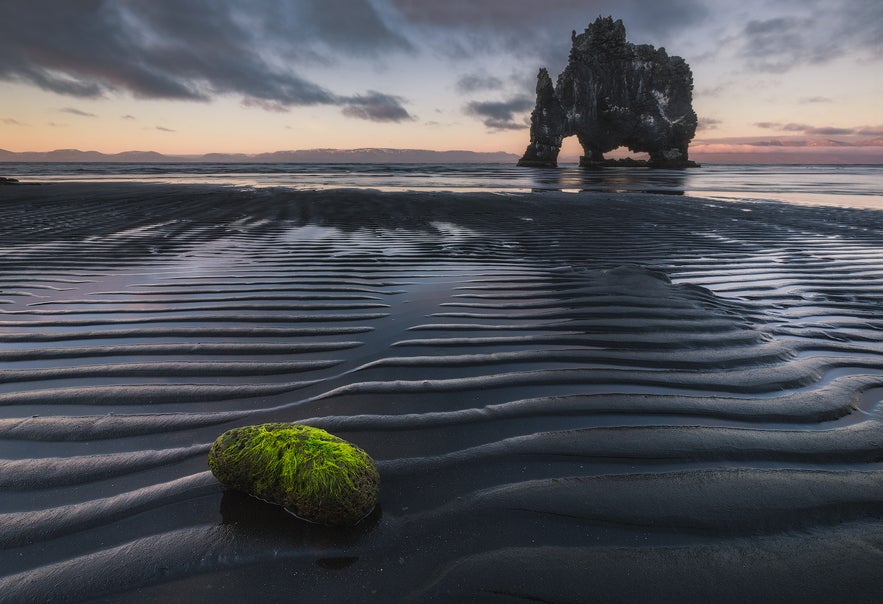 The ripples in the sand at Hvitserkur are a great example of diagonal leading lines. Photo by: 'Iurie Belegurschi'.
The ripples in the sand at Hvitserkur are a great example of diagonal leading lines. Photo by: 'Iurie Belegurschi'.
For the greatest effect, use multiple diagonal lines that converge into a single point of interest, such as these ripples of sand at Hvítserkur. Leading lines like these provide an important perspective cue that conveys the depth in a photograph. The further away and smaller that the lines get, the more depth that is conveyed.
A good tip to follow when photographing diagonal leading lines in the foreground is to get down low with your camera and tripod. As you get down lower, the lines will seem further away in the shot. This increases the viewer’s perception of depth and distance, thereby creating a very powerful composition with an added sense of dimension.
3. Lead the Eye to the Subject
 The shoreline of the black sand beach leads into the Reynisdrangar sea stacks. Photo by: 'Iurie Belegurschi'.
The shoreline of the black sand beach leads into the Reynisdrangar sea stacks. Photo by: 'Iurie Belegurschi'.
One of the most effective ways of drawing the viewer’s eye into your composition is to use leading lines to point to the subject or a point of interest. You can do this by placing your subject where the lines converge. Doing so means that the eye will be naturally drawn along the lines to the subject itself.
Be wary that when you compose photos with leading lines, the last thing that you’ll want is for the viewer’s eye to be led out of the scene, so be mindful of where the lines start in your composition.
The most effective technique is for the lines to emerge from the corners or to emanate from the bottom of the frame, pointing towards elements in the heart of the image. Essentially, what this does is to form a visual path that helps to draw attention to various aspects of your composition, such as a main focal point – the subject – in the distance. By placing the subject at the end of a leading line or where leading lines converge, you will be able to add to the strength of the subject at the core of your image.
4. Use Lines to Create Flow
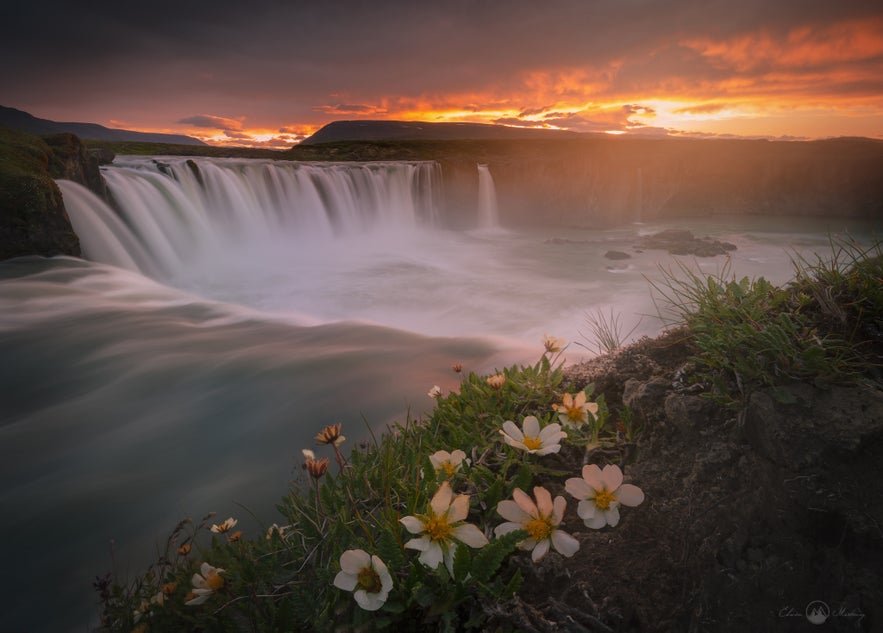 This zig-zag line leads from the flowers into Godafoss waterfall. Photo by: 'Edwin Martinez'.
This zig-zag line leads from the flowers into Godafoss waterfall. Photo by: 'Edwin Martinez'.
Leading lines are also a great way of evoking a sense of natural visual flow within your landscape photos of Iceland. Obvious leading lines, such as a meandering river or a line of fence posts, are the easiest way to do this, however, feel free to experiment with your composition and the types of lines that you use. For example, an implied or defined cyclical line can lead the eye in a circular motion around the frame. Horizontal lines can sometimes be problematic though, as they can interrupt visual flow and trap the eye, or lead out of the edges of the frame.
5. Changing the Mood
Although leading lines are predominantly used to lead the viewer’s eye through an image, they can also be used to change the overall mood or dynamic of your composition. This is because our minds often associate different types of lines with different emotions. This means that if used effectively, you can harness leading lines to add a sense of drama, stability, or even solitude to an image.
 The S-curve created by this leading line exaggerates the drama of Vestrahorn. Photo by: 'Iurie Belegurschi'.
The S-curve created by this leading line exaggerates the drama of Vestrahorn. Photo by: 'Iurie Belegurschi'.
Pay attention to the shapes that your lines take. Horizontal lines are the most common in photography. As they are most often centred at the horizon, they convey a sense of stability in a composition.
On the other hand, diagonal lines can convey a sense of visual energy or drama.
Meanwhile, vertical lines can be used to exaggerate heights, highlighting just how tall and imposing a natural structure might be.
Curved lines, which are often found in rivers winding through the Icelandic Highlands, can add a sense of peace and solitude to an image, while jagged lines such as the peaks of Mount Vestrahorn, can convey a strong sense of freedom and wildness.
6. Using Shadows
When looking for leading lines, don’t restrict yourself to tangible objects or structures. Think outside the box and consider using shadows instead!
Shadows can be found at the base of trees, cliffs and even in the undulating landscape of the Icelandic Highlands when photographed from above. Long shadows can create powerful lines that lead your eye right from the very front to the back of the image. This creates a strong sense of depth and flow within the scene.
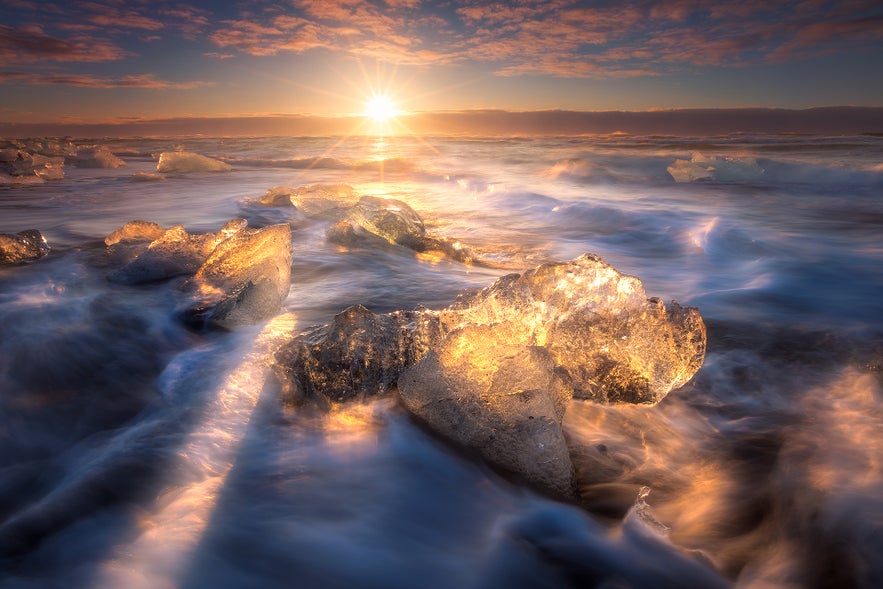 Even shadows can make great leading lines, as seen here at the Diamond Ice Beach. Photo by: 'Iurie Belegurschi'.
Even shadows can make great leading lines, as seen here at the Diamond Ice Beach. Photo by: 'Iurie Belegurschi'.
7. Emphasising Leading Lines with Colour
There are times in Iceland when you will encounter things in nature that may not initially be considered as strong leading lines. They might be without any defined edges, such as patterns created by the snow, or they may simply be the same texture as what is around them, such as dirt. However, these lines might still stand out within the landscape due to the colours that they take.
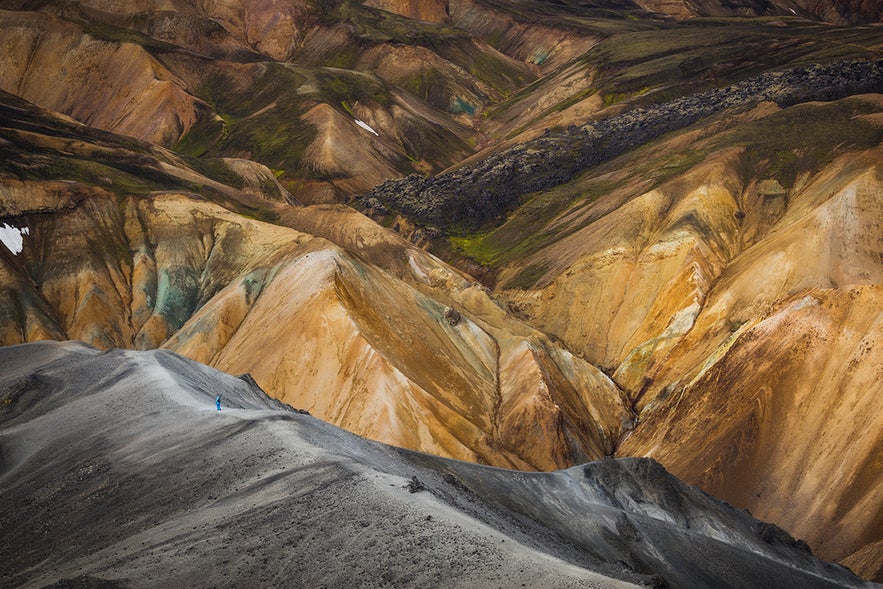 These layers of mountains in the Highlands create beautiful leading lines. Photo by: 'Iceland Photo Tours'.
These layers of mountains in the Highlands create beautiful leading lines. Photo by: 'Iceland Photo Tours'.
Consider the beautiful layers of colours in the rhyolite mountains of the Icelandic Highlands. The contrast between these colours creates distinct boundaries that lead the eye from the foreground directly towards the distance. To further highlight this effect, you can increase the saturation a little during post-processing to make the colours more vivid. Doing so will also make your images ‘pop’ and give them a certain ‘oomph’.
8. Get Down Low or Aim Up High!
A very effective way of emphasising leading lines in your scene is to adjust your perspective by changing the direction or angle of where you are shooting from. In fact, getting down low or aiming downwards from up high can dramatically alter the shape of your leading lines.
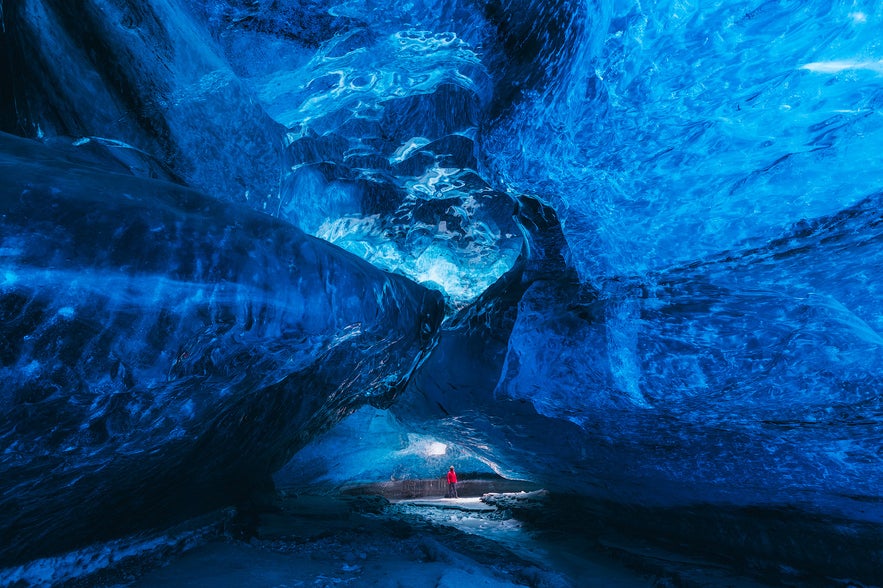 Getting down low can emphasise leading lines, such as in this ice cave. Photo by: 'Iurie Belegurschi'.
Getting down low can emphasise leading lines, such as in this ice cave. Photo by: 'Iurie Belegurschi'.
This simple trick can have quite a large impact on your resulting shot, either by improving your composition or completely changing it. It can affect the depth that you are able to elicit within your image and even affect the visual flow itself. So whenever you spot leading lines, remember to experiment with different positions and angles!
9. Use Lines to Make Abstract Art
While leading lines are most often used to draw the eye to a particular point of interest, they can also be an interesting subject in their own right. The stunning ridges of a basalt cliff face may be harnessed to create beautiful, abstract art that focuses on the lines themselves, textures and different colours within the scene.
When using lines to create an abstract, it is useful to fill the entire frame with lines, rather than including any other part of the scene. This minimises distractions and allows the viewer to concentrate on the abstractness of the lines themselves.
10. Look for Leading Lines in Unusual Places
 An abstract aerial image of the glacial rivers in Iceland. Photo by: 'Iurie Belegurschi'.
An abstract aerial image of the glacial rivers in Iceland. Photo by: 'Iurie Belegurschi'.
Although leading lines are usually quite easy to find on the ground, they can be found in many other places within the Icelandic landscape. The stunning outlines of Iceland’s braided rivers from above are an excellent example of making the most of leading lines where you might not normally think to look for them. By shooting from above, you can create an incredibly abstract scene that draws your eye into and around the image, while invoking a sense of curiosity and awe. This just goes to show how you can use leading lines to create amazing photos in the most ordinary of situations!
About the author: Serena Dzenis is a landscape photographer based in Iceland. You can find more of her work on her website or by following her on Facebook and Instagram.
Would you like to start composing amazing landscape photos like these? Join our photography workshops in Iceland, where you’ll receive in-depth tuition from our world-class photography guides.


